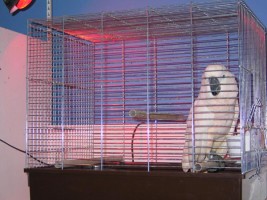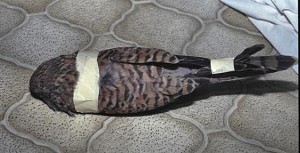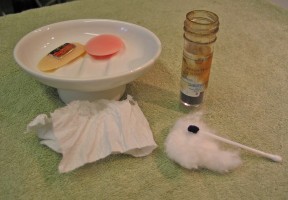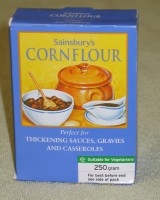The Parrot Society UK
First Aid & Emergency Care for Birds
Birds have a remarkable ability to mask signs of disease – they have to in order to survive in the wild. Any bird that is ‘one degree under’ will be easy prey to predators, and will be bullied by others of its own kind. Therefore recognising that your bird has a problem requires observation on the part of the owner, and knowledge of that individual bird’s normal behaviour. It is no good simply throwing in food and water in a five-minute dash once every 24 hours – spend time with your birds getting to know them as individuals, each with its own character and actions. Subtle changes in the daily routine may give you the first clue that something is going wrong. Watching your birds is after all one of the great pleasures of the hobby!
PREPARATION. Owners also need to be prepared for problems. Birds can deteriorate very quickly, and accidents happen, so it is no good rushing around like a headless chicken when disaster strikes, wondering what to do and searching for an avian vet. This article addresses some of the things to look out for and preparations to make in case of emergency – and that does not mean just keeping a pot of antibiotic on the shelf!
The first of these is to establish a relationship with your nearest recommended avian veterinarian. General dog and cat practitioners have little experience or ability with birds, but there is an increasing number of interested and highly competent vets who will see avian patients. See the listing by county on this website - Avian Vets - or you can rely on recommendation from friends, but take the trouble to register with and find out the address of an avian vet near you before trouble strikes! Most practices will give details of their consulting times and appointment system, emergency cover and facilities available. Then when a problem arises, you will know exactly what phone number to use, and where to go.
As you become more experienced in bird keeping, you will learn to recognise simple problems and be able to deal with them yourself. Such things as minor cuts and scratches, broken and bleeding feathers or claws, nesting material caught round legs - even egg-binding – are readily treated by experienced aviculturists. In the beginning, however, such conditions may cause panic and alarm until you have seen someone quietly and confidently sort it out.
OBSERVATION As mentioned above, careful and regular observation of your birds’ normal behaviour patterns is paramount. Each is an individual, with its own way of doing things, and recognising how each bird feeds, drinks, perches, preens, plays, vocalises, sleeps, and interacts with its companions and its owner is essential basic information. Any subtle changes to the ‘norm’ may be the first sign that something is going wrong.
ISOLATION Having recognised that a bird is not well, then it is important to put the patient somewhere quiet on its own. There are several reasons for this: firstly it allows closer observation of the problem and monitoring of progress. Food and water intake may be registered, and droppings and attitude observed. This can be difficult if the bird is one of a group. Secondly, a sick bird in a group will be bullied and kept away from food, so it will not do it any favours if you leave it to fend for itself. Thirdly, if by chance the problem is contagious, then the sooner you get it away from other birds the better. Finally, the bird will recuperate more quickly if it is allowed peace and quiet away from other birds, cats and dogs, noisy TV and radio or family life! Choose a spot that is quiet and away from the daily hurly-burly; preferably one that can be darkened by drawing blinds or curtains, or else part cover the cage.
REHYDRATION Sick birds will stop eating and drinking: food intake is not so critical in the short term, but fluid deprivation is. If vomiting and diarrhoea are present, or if the bird has a fever, then it will dehydrate rapidly, thus adding to its problems. In the early stages, simply sweetening the drinking water with honey, sugar, glucose or fruit juice may encourage it to drink more; but if fluids are not taken voluntarily, you may need to carefully dose a few drops at a time with a dropper or syringe. Little and often is better than too much in one go, or the bird may vomit it all back. Commercial products such as Polyaid, Spark, Lectade, or Critical Care Formula are better still since they provide not only readily digestible sugars but also balanced electrolytes.
WARMTH A bird’s natural body temperature is higher than that of mammals, and it takes a lot of metabolic effort to maintain. If a sick bird that is not eating is trying to keep warm, it is diverting a lot of energy just to this process. This is why a sick bird will sit quiet and fluffed up – it is raising its feathers to trap more air between them to improve the insulating function of its plumage, and it stays still to conserve energy. If the carer can provide warmth to aid maintenance of body temperature, this will save the bird effort and it will be able to direct some energy towards recovery. Certainly bringing an outdoor bird inside from a cold aviary to a warm room is a start. Other techniques may be just to cover the cage with a towel or blanket; placing the cage near a heater or radiator in a warm room; using an infra-red heat lamp (with care not to scorch the bird!); using an under-cage heating pad or blanket; or investing in a purpose-made brooder or hospital cage. A minimum temperature range of 85-90°F (29-32°C) should be aimed for in the first instance, reducing as the bird recovers.

Moluccan Cockatoo in cage under an infra-red lamp
IMMOBILISATION When the emergency situation involves possible fractured limbs, then temporary immobilisation of the damaged area will reduce suffering in the bird and will minimise further damage to the fracture site. A bird flapping a broken wing or trying to run on a broken leg will tear soft tissues like muscles, nerves, blood vessels and tendons, which may mean that damage that could otherwise have been repaired becomes un-saveable because of such subsequent injury. Birds of prey or waterfowl that have flown into powerlines or fences; small birds attacked by larger birds or family pets; or road accident casualties, will all benefit from simply being wrapped in a towel, blanket, or jacket. Small birds may be placed in a box padded with towelling or tissues. Wings may be temporarily taped together at their tips and around the shoulders with masking tape or Vetrap. Canvas carrying bags are available for large waterfowl like swans and geese. Garment sleeves, socks or tights also make useful temporary immobilisers.

Kestrel with damaged wings, temporarily immobilised with masking tape
CONTROL OF HAEMORRHAGE A common emergency phone call I get is the bird that is bleeding from a torn claw, a broken beak tip, or a damaged blood feather. All of these parts may be damaged in play, fighting, panic flapping, or by owners trying to clip their own birds’ beaks and claws. Each of these areas bleeds profusely, and the blood tends to be splattered liberally around, making the whole situation look much worse. My advice for beaks and claws is firstly to apply something that will aid clotting. In the clinic we used Potassium Permanganate or Ferric Chloride, but at home you can use cornflour, plain flour, plain talcum powder, soap, or dry tissue or cotton wool. All of these will encourage the clotting process. In the case of the bleeding blood feather, the best answer is to pull it out – grasp the feather at the base between finger and thumb, give a quick twist and pull, and the feather will easily come out. The supplying blood vessel will recoil and retract like a rubber band, sealing the blood source immediately, and a new feather will grow in the follicle within a few weeks. If you cannot bring yourself to do this, then use one of the above anti-coagulants as a temporary measure, but get the feather professionally removed as soon as possible afterwards, otherwise the bird will pick at the scab or flap around and set off the bleeding again.


Soap, tissue, potassium permanganate & cornflour all make useful emergency clotting agents
Having controlled the haemorrhage, the bird should then be kept quiet and still: draw the curtains, cover the cage, and turn the lights down to encourage rest. All the time the bird is active, further haemorrhage is stimulated. Offer sweetened water (see above) to compensate for the shock and blood loss.
SPECIFIC MEDICATION is required for shock, pain relief, and possible infection. Most of these will be administered by your veterinarian, but at home you can usefully control pain by using baby-strength Calpol, which is quite safe and effective for birds. Something the size of a canary may be given one drop every 4 – 6 hours, an African Grey will take 4-5 drops at the same frequency, and a Macaw 6-10 drops. Vets will usually use Meloxicam (Metacam or equivalent) or Carprofen (Rimadyl). You may well have these in the house if you have dogs and cats on this medication, but take the advice of your avian vet for the dose rate in birds.
HOSPITALISATION & FOLLOW-UP Having survived the initial crisis, the sick or injured bird will probably require ongoing treatment and care. The same criteria of warmth, isolation, peace and quiet apply as above, plus specific therapies that may have been supplied by your vet.
KEEP RECORDS Probably more important to the aviculturist rather than the pet-bird owner, but notes of birds affected by accident or disease, and when, are just as important as breeding or purchase records. A pattern of disease may emerge, if you can look back to find similar problems at the same time last year, for example. This may coincide with breeding, new bird introduction, growth of certain plants in the aviary, or change of feeding regime. All sorts of useful information may be gleaned if careful records are kept, and used!
I hope this brief summary has helped provide some useful tips for the emergency care of your birds, but hopefully they are tips that you will never need to use!
© Alan K Jones Feb 2019
